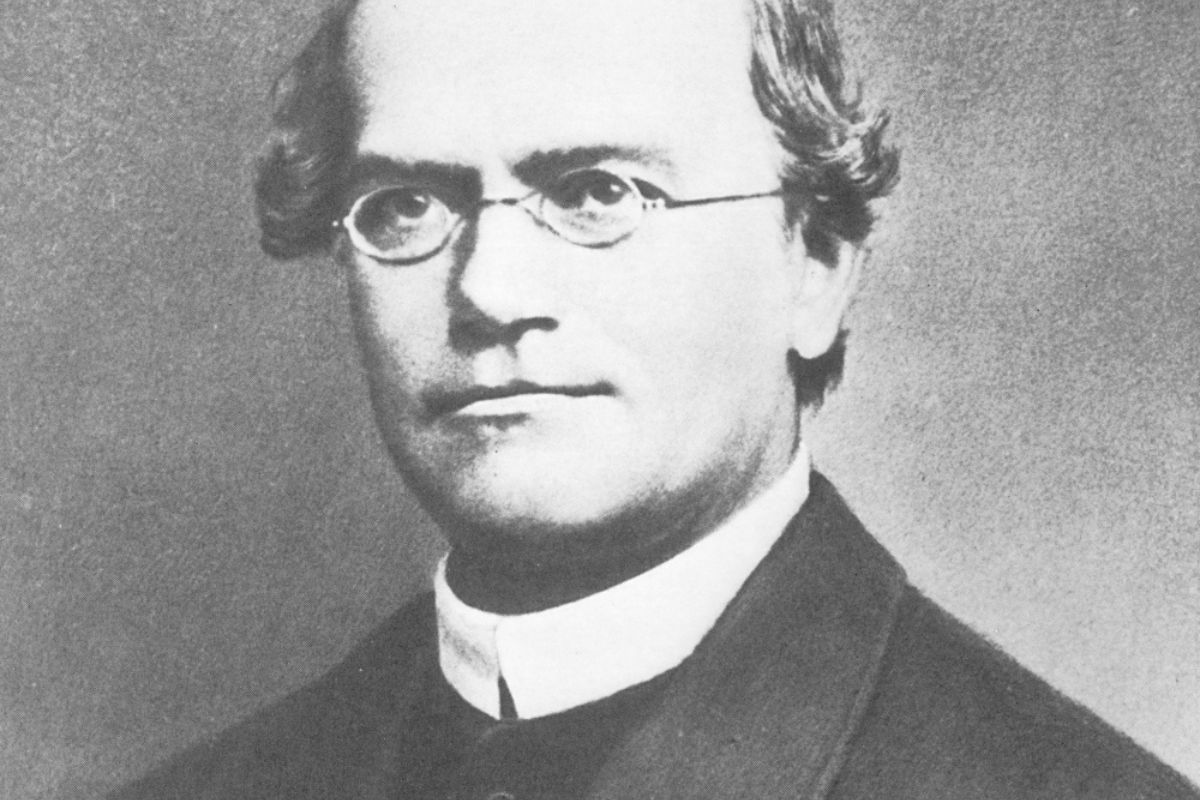I recently asked a boy who is studying in Class VII whether he knew who Mendel was. His face lit up and he said “Of course I know. He was a monk who lived a long time ago.” Indeed, Gregor Johann Mendel lived a long time ago; yesterday we celebrated his 200th birthday. But are we celebrating his birthday because he was a monk – a man of god? Hardly. We celebrate it because he is a paragon of science, especially of experimental science. “I have experienced many a bitter hour in my life. Nevertheless, I admit gratefully that the beautiful, good hours far outnumbered the others. My scientific work brought me such satisfaction …,” Mendel had said. When Mendel was still young, his father met with an accident in their farm in Austria (a log fell on him) that restricted his ability to work. Mendel himself frequently suffered from clinical depression, perhaps because of his father’s accident and its resultant impact on their family.
Their family had financial limitations, because of which Mendel – whose unusual intelligence and enthusiasm for learning were obvious to his teachers – had to join the St. Thomas Monastery in Brunn (now Brno in Czech republic), heeding the advice of his teacher, Friedrich Franz. Mendel gained access to a huge library in the monastery, which immensely helped him to learn. He was ordained a priest in 1847. He could not carry out his duties as a priest since he became confined to bed because of illness. The abbot of the monastery, Franz Cyril Napp, who was himself interested in science and plant breeding, wrote to the bishop in 1849 “He (Mendel) is very diligent in the study of sciences but much less fitted for work as a parish priest, the reason being he is … (often) dangerously ill.” He was made a high school substitute teacher in 1849 in a secondary school in Znaim (now Znojmo).
His “vivid and lucid method of teaching” won the hearts of his co-teachers and students. Mendel took the teaching state certification examination but failed in the final round. (Some years later he took the test again but had failed again.) At the behest of Abbot Napp, in 1851 Mendel was sent to Vienna to study science at the Royal Imperial University. He was taught physics by Christian Doppler (of “Doppler effect” fame) and botany by Franz Unger (who had postulated that all cells in organisms are derived from preexisting cells and that such units are the fundamental building blocks of organisms). This training shaped Mendel’s scientific thought process and skills, especially to use mathematics to analyze experimental data. He finished his studies and returned to Brunn in 1853. He initiated experiments in plant breeding and studied how characteristics of pea plants and peas were transmitted from one generation to the next.
He chose seven characteristics, that included flower colour, pod shape, unripe pod colour and plant height. He carried out experiments – crossing plants with different and also with similar characteristics – and noted the numbers of plants with these characteristics in the next and sometimes in more generations. He kept meticulous count. Several features stand out in the methods of scientific inquiries practiced by Mendel. Biology during the 19th century was mainly an observational science, but Mendel had intelligently designed and executed experiments. He was quantitative in his thinking and kept numerical records of the results of his experiments. He repeated the same experiment many times; testimony to his appreciation of natural sources of variation/error in experimentation. He pooled the results of similar experiments, analyzed the pooled data mathematically and compared the results with those of contrasting experiments.
From these he deduced general laws of inheritance, now known as Mendel’s laws. He was a trend-setter and a paragon of modern science. He presented the results of his experiments to the Society for the Study of the Natural Sciences in Brünn in 1865. “Not a solitary soul had understood him,” wrote Loren Eisley, an accomplished natural science writer. The results were published in the Proceedings of the meeting in 1866. During the next 34 years, there were only three citations of his work in scientific literature. Mendel was way ahead of his time. After 34 years of neglect, in 1900 three botanists – Hugo de Vries (Holland), Karl Correns (Germany) and Erich von Tschermak (Austria) – independently “rediscovered” his work. Correns wrote “I thought that I had found something new. But then I convinced myself that the Abbot Gregor Mendel in Brno, had … not only obtained the same results through extensive experiments with peas … but had also given exactly the same explanation, as far as that was possible in 1866.”
Mendel discovered the foundational principles of inheritance without studying human beings. But soon after the “rediscovery,” in 1902 Archibald Garrod, Physician to the Hospital for Sick Children, (now, GOSH – Great Ormond Street Hospital), London, determined that Mendel’s laws also applied to humans. He was studying alkaptonuria, a biochemical disorder because of which urine and parts of the body turn black. Over time, persons with alkaptonuria suffer from problems of the joints, heart, lungs and other organs. Garrod showed that alkaptonuria is inherited following Mendel’s laws. He published the results of his studies as a book which carried the subtitle “A study in chemical individuality.” Today we talk about such ‘individuality’ to explain why patients with the same disease do not respond to the same drug.
Garrod, like Mendel, was also ahead of his time. Mendel’s scientific explantions were revolutionary. Before him, the scientific community held that characteristics of parents “blended” together to result in the characteristics of children. Mendel proposed that “particulate factors” are randomly chosen from each parent and passed on to their children to give them their individual characteristics. Mendel’s laws precisely describe how these factors are transmitted from parents to children. Today, we call these factors genes. The transmission of genes follows the same laws that Mendel had proposed in 1866. On his 200th birthday, we salute him as a paragon of science.










